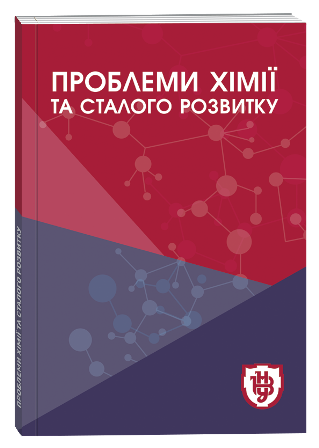ASSESSMENT OF THE LEVEL OF ENVIRONMENTAL SAFETY OF ZHYTOMYR REGION TERRITORIES BY VOLUME OF WASTE GENERATION
DOI:
https://doi.org/10.32782/pcsd-2022-1-1Keywords:
volumes of waste per km2 of territory and per capita, relative (low), moderate, increased, high ecological hazardAbstract
The purpose of the study is to assess the level of environmental safety of administrative-territorial units of Zhytomyr region in terms of waste generation. Methodology. The information base of the study was the data of the Head Department of Stats of Zhytomyr Region on waste generation for the period 2017-2020. based on indicators of waste generation per km2 of territory and per capita, followed by grouping of territories by level of environmental hazard (relative (low), moderate, increased or high). The scientific novelty is to assess the volume of waste generation and determine the level of environmental safety in the context of Zhytomyr region. Conclusions. During the period 2017–2020, there is a decrease in waste generation. A significant disparity in the volume of waste generation in the Zhytomyr region. The lion's share of waste generated falls on cities with its annual increase. The intensity of waste generation per unit of Zhytomyr region and per capita for the studied years is characterized by a decrease of 1.1-1.2 times per year with the maximum excess of these values in all cities and districts of the region, respectively. 4 groups of ecological danger are defined: IV group – high ecological hazard (cities of Zhytomyr and Korosten (2018, 2019), Khoroshiv district (2017, 2018 and 2020); III group – increased ecological hazard (Korosten (2017, 2020), Korostyshiv (2017) and Khoroshiv (2019) districts), group II – moderate environmental hazards (Berdychiv, Malyn and Novograd-Volynsky, Olevsky (2019), Andrushiv, Novograd-Volyn and Chernyakhiv (2017 - 2019), Zhytomyr (2020), Luhyny (2019, 2020), Narodytsky (2018), Radomyshl (2018, 2020) districts), and group I – relative (low) environmental hazard (most districts of Zhytomyr region, Malyn (2018) and Novograd-Volynsky (2019)).
References
Головне управління статистики у Житомирській області: офіційний веб-сайт. URL: http://www.zt.ukrstat.gov.ua.
Sankoh F. P., Yan X., Mohamed Hamza Conteh A. A situational assessment of socioeconomic factors affecting solid waste generation and composition in Freetown, Sierra Leone. Journal of Environmental Protection. 2012. 3(7). pp. 563–568. DOI: 10.4236/jep.2012.37067.
Kawai K., Tasaki T. Revisiting estimates of municipal solid waste generation per capita and their reliability. Journal of Material Cycles and Waste Management. 2016. 18. Pp. 1-13. DOI: 10.1007/s10163-015-0355-1.
Валерко Р. А., Герасимчук Л. О. Оцінка рівня техногенного навантаження Житомирської області. Вісник ЖНАЕУ. 2017. 1(58), т. 1. С. 39–48. URL: http://ir.znau.edu.ua/handle/123456789/8052.
Валерко Р. А., Герасимчук Л. О. Екологічна оцінка стану сільських населених пунктів Житомирської області. Екологічні науки. 2020. 6 (33). С. 96–102. DOI: 10.32846/2306-9716/2020.eco.6-33.14.
Noufal M., Yuanyuan L., Maalla Z., Adipah S. Determinants of household solid waste generation and composition in Homs city, Syria. Journal of Environmental and Public Health. 2020. 2020. DOI: 10.1155/2020/7460356.
Vološinová D., Ansorge L. Waste footprint of selected city districts of Prague. European Journal of Sustainable Development. 2021. 10(4). pp. 217–226. DOI: 10.14207/ejsd.2021.v10n4p217.
Герасимчук Л. О. Економічний механізм забезпечення охорони навколишнього природного середовища в Житомирській області. Вісник ЖНАЕУ. 2017. 2(61), т.1. С. 116–122. URL: https://sciencehorizon.com.ua/web/uploads/pdf/%E2%84%962(61)_116-122.pdf.
Ceylan Z. Estimation of municipal waste generation of Turkey using socio-economic indicators by Bayesian optimization tuned Gaussian process regression. Waste Management & Research. 2020. 38(8). pp. 840–850. DOI: 10.1177/0734242X20906877.
Supangkat S., Herdiansyah H. Analysis correlation of municipal solid waste generation and population: environmental perspective. IOP Conference Series: Earth and Environmental Science. 2020. 519(1). 012056. DOI: 10.1088/1755-1315/519/1/012056.
Afroz R., Hanaki K., Tudin R. Factors affecting waste generation: a study in a waste management program in Dhaka City, Bangladesh. Environment Monitoring and Assessment. 2011. 179. pp. 509–519. DOI: 10.1007/s10661-010-1753-4.
Matsui Y., Trang D., Thanh N. Estimation of waste generation and recycling potential from traditional market: a case study in Hue city, Vietnam. Journal of Environmental Protection. 2015. 6. pp. 308–320. DOI: 10.4236/jep.2015.64031.
Bharti P. K., Bhupesh S., Singh R. K., Tyagi A. K. Waste generation and management in Antarctica. Procedia Environmental Sciences. 2016. 35. pp. 40–50. DOI: 10.1016/j.proenv.2016.07.004.
Lagerkvist A., Dahlén L. Solid waste generation and characterization. In: Meyers R.A. (eds). Encyclopedia of Sustainability Science and Technology. Springer, New York, 2020. DOI: 10.1007/978-1-4419-0851-3_110.
Nyumah F., Charles J., Bamgboye I. A., Aremu A. K., Eisah J. S. Generation, characterization and management practices of household solid wastes in Cowfield, Paynesville city, Liberia. Journal of Geoscience and Environment Protection. 2021. l.9. pp. 113–127. DOI: 10.4236/gep.2021.94007.







